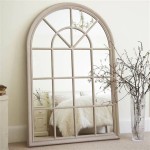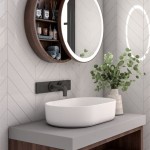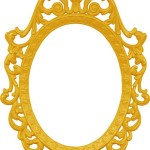Best Way To Turn A Window Into A Mirror
Transforming a window into a mirror offers a range of benefits, from enhancing natural light to creating an illusion of spaciousness. This article explores several methods for achieving this effect, detailing the materials, processes, and considerations involved in each approach.
Mirror Film
Mirror film is a readily available and cost-effective solution for converting a window into a mirror. This self-adhesive film adheres directly to the glass surface, creating a reflective surface. The film comes in various tints and reflective grades, offering flexibility in light transmission and privacy levels.
Key Considerations:
- Ease of application: Mirror film is generally easy to install with a squeegee and soapy water, making it a suitable DIY project.
- Cost-effectiveness: This option offers a relatively low-cost solution compared to other methods.
- Variety: Available in various shades and reflective properties, catering to specific needs.
- Removal: Most mirror films can be removed without damaging the underlying glass.
Mirror Effect Spray Paint
Specialized spray paints are designed to create a mirror-like finish on glass surfaces. These products provide a more permanent solution than film and can be applied to windows of varying shapes and sizes.
Key Considerations:
- Surface preparation: Thorough cleaning and priming of the glass surface is crucial for achieving a smooth and even finish.
- Application technique: Multiple thin coats are recommended for optimal results, allowing each coat to dry before applying the next.
- Ventilation: Adequate ventilation is essential during application due to the paint fumes.
- Durability: Mirror effect spray paint is generally more durable than film but may be susceptible to scratching or chipping over time.
Reflective Acrylic Sheets
Reflective acrylic or plexiglass sheets offer a more robust and durable mirroring solution. These sheets can be cut to size and mounted over the existing window, effectively transforming it into a mirror.
Key Considerations:
- Durability: Acrylic sheets are more resistant to scratches and damage than film or spray paint.
- Mounting: Requires a more involved installation process, potentially involving framing or adhesive mounting systems.
- Cost: Acrylic sheets are typically more expensive than film or spray paint.
- Light transmission: Offers varying levels of light reflectivity and transmission depending on the chosen acrylic type.
One-Way Mirror Film
One-way mirror film creates a mirrored surface on one side while allowing visibility from the other, making it a suitable option for security or privacy applications. This film works by reflecting a portion of the light back while transmitting the remainder.
Key Considerations:
- Light conditions: The effectiveness of one-way mirror film depends on the relative light levels on each side of the glass. The mirrored effect is more pronounced on the brighter side.
- Privacy: Offers enhanced privacy during daylight hours but can become transparent at night if internal lighting is brighter than external lighting.
- Application: Similar to standard mirror film, application involves using soapy water and a squeegee.
Traditional Mirror Installation
Replacing the existing windowpane with a custom-cut mirror offers the most authentic mirrored surface. This approach involves removing the existing glass and installing a mirror panel of the same dimensions.
Key Considerations:
- Professional installation: This method typically requires professional assistance due to the complexities of glass removal and mirror installation.
- Cost: Represents the most expensive option due to the cost of materials and labor.
- Permanence: Offers a permanent solution, completely transforming the window into a mirror.
- Aesthetics: Provides the most seamless and aesthetically pleasing mirrored finish.
Choosing the Right Method
The optimal method for converting a window into a mirror depends on individual needs and circumstances. Factors to consider include budget, desired level of reflectivity, permanence, and ease of installation. Carefully evaluating these factors will guide the selection process and ensure a successful transformation.
Safety Precautions
Regardless of the chosen method, certain safety measures are essential. When working with sharp tools like glass cutters or utility knives, wear appropriate safety gloves and eye protection. Ensure adequate ventilation when using spray paints or adhesives. If unsure about any aspect of the process, consulting a professional is advised.
Long-Term Maintenance
Maintaining the mirrored surface is important for preserving its reflective qualities. Regularly cleaning the surface with a glass cleaner designed for mirrors will prevent streaks and maintain optimal reflectivity. Avoid using abrasive cleaners or materials that could scratch the surface. Inspecting the mirrored surface periodically for signs of damage or deterioration is also recommended.

How To Turn A Vintage Window Into Mirror

How To Turn An Old Window Into A Mirror Pine And Prospect Home

Turn A Window Into Mirror With Less Than 20 Earlyexperts

How To Turn A Vintage Window Into Mirror

How To Turn A Vintage Window Into Mirror An Oregon Cottage

How To Turn An Old Window Into A Mirror Pine And Prospect Home

How To Create Your Own Diy Window Mirror For Just 10 Ideal Home

Turning An Old Window Into A Mirror Easiest Diy Ever

Turn A Window Into Mirror With Less Than 20 Earlyexperts

How To Turn A Vintage Window Into Mirror An Oregon Cottage








